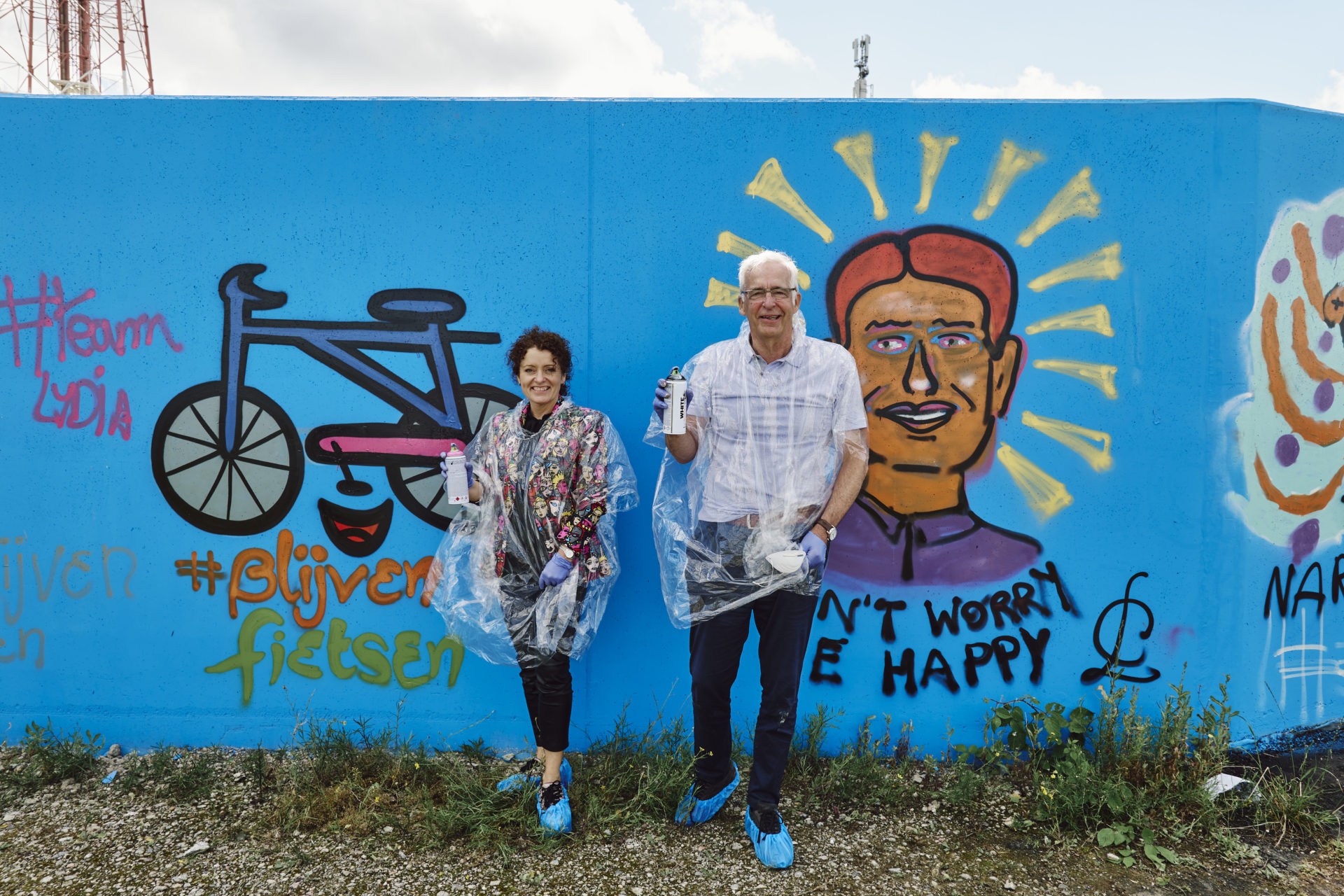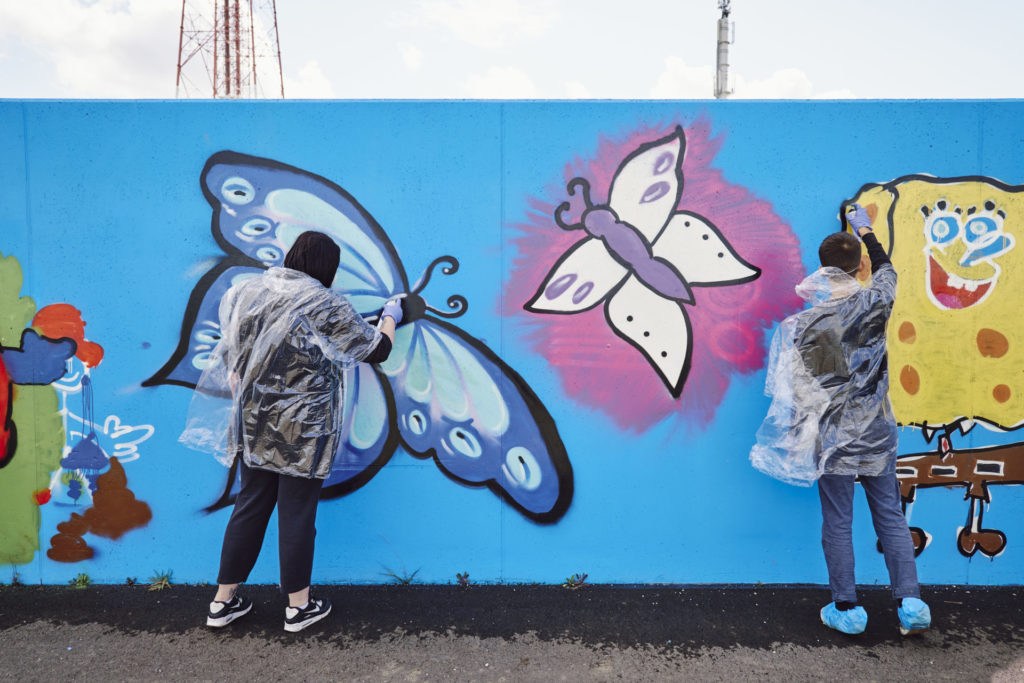The long flood wall in the Antwerp port area was given a makeover this weekend from 500 participants of a graffiti workshop, who transformed the wall into a colourful welcome for people passing by on the Scheldt.
The wall that runs along the river is almost a kilometre long, and the street side of it was already turned into a mural by some 80 graffiti artists back in 2019 when it was first built to protect against flooding.
“We want to welcome everyone who comes to visit the port and the city via the water. The flood wall is a unique invitation card to get that message across,” said Flemish Minister of Mobility and Public Works Lydia Peeters.
“This welcome is aimed at everyone who enters the port via the water: from the crew of ships to passengers on international cruise liners and the users of DeWaterbus.”

Photo from Port of Antwerp

Photo from Port of Antwerp
The organising partners, Port of Antwerp and De Vlaamse Waterweg, called in two specialised partners for the realisation of the workshop: Wallin’ from Ghent, and Spray & Play from Mortsel.
“Our port is known as the industrial and logistic heart of our Belgian economy, but for the general public the port area is actually still an undiscovered pearl,” said Lennart Verstappen, spokesperson for Port of Antwerp.
“With this event, we want to give everyone the chance to discover our port in an original way and get to know the ins and outs of graffiti art.”
The concrete flood wall was built as part of the Sigma Plan, which focuses on preventing flooding in Flanders from the Scheldt and its tributaries during storm tides by building higher dikes and natural floodplains.
The plan also provides for the protection, expansion and recreational development of the unique river nature in the Scheldt valley, according to Port of Antwerp.
While the initial plan dates back to 1976, it was updated in 2005 to respond to climate change and its accompanying weather extremes and rising sea levels.
In addition to the port’s floodwall, capacity was created to provide transport pipelines under the ground along the Scheldt river, allowing for the sustainable development of the port and therefore less road transport.
The street side of the wall is located along the Scheldelaan, near the Total site on the right bank.
Anyone can visit the water side of the wall from the DeWaterbus, which runs between the centre of Antwerp and Lillo.

